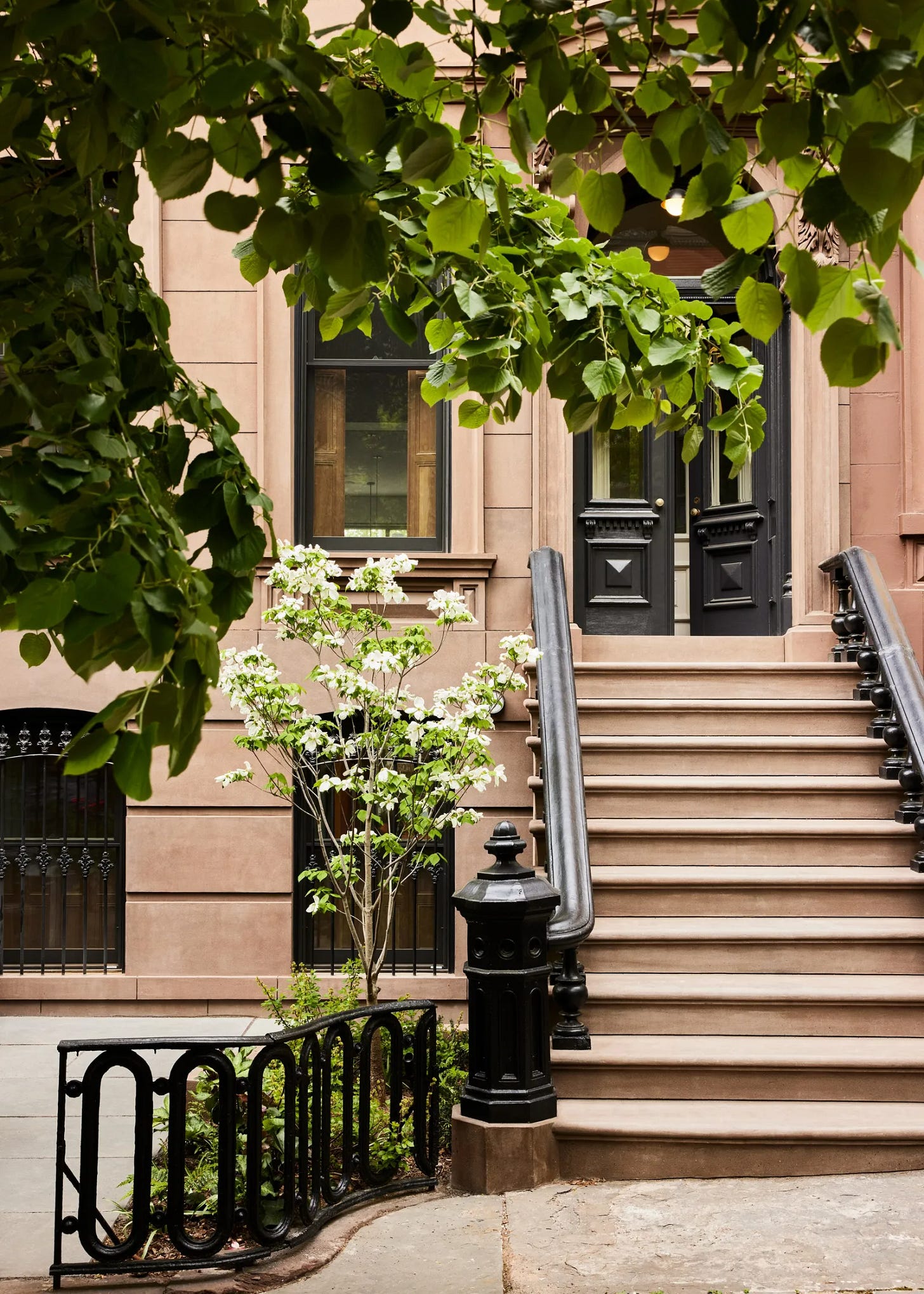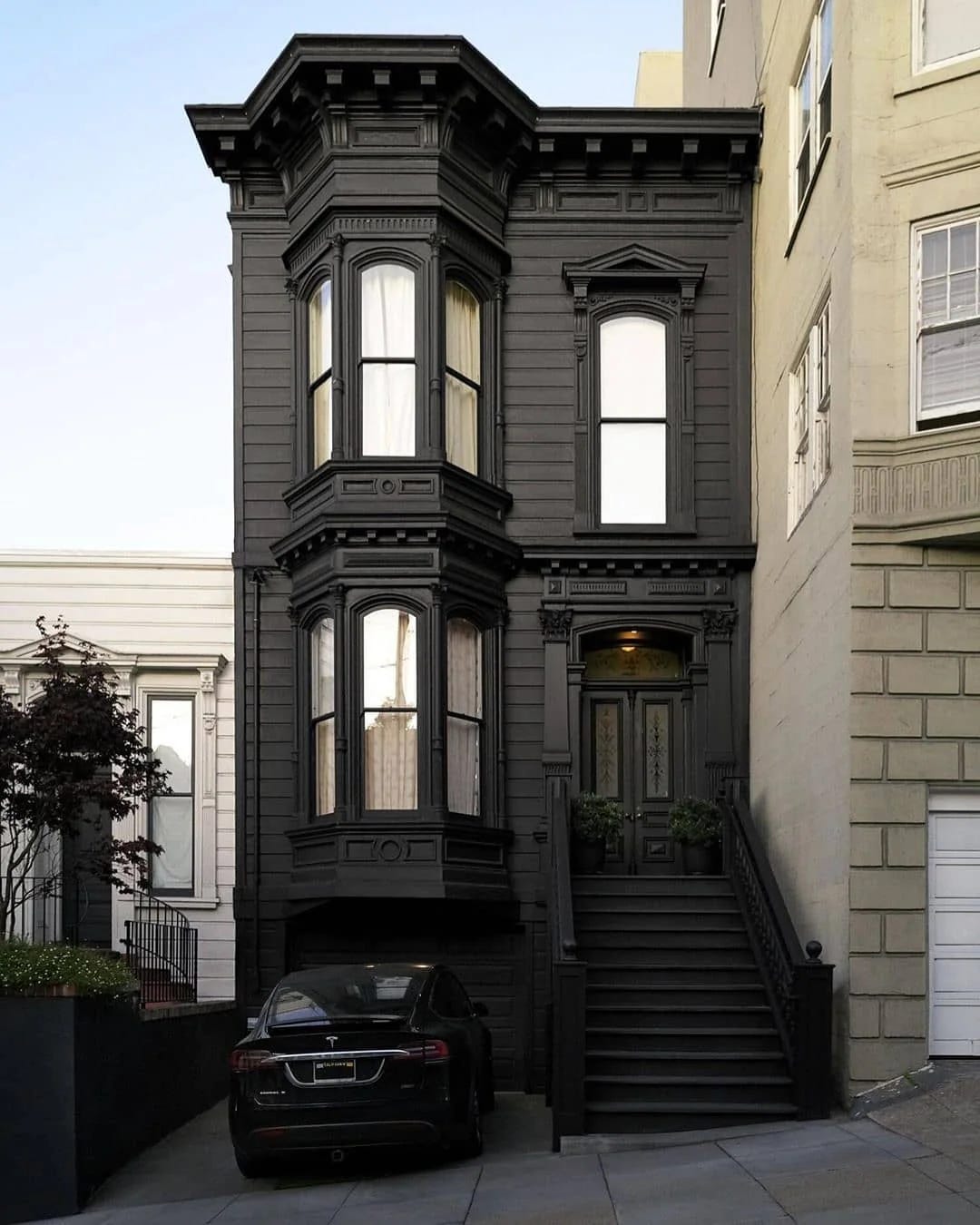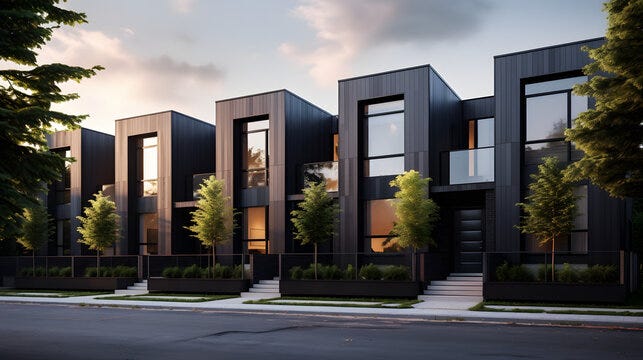Brownstone homes emerged as a quintessential architectural style in American cities during the mid-19th century, particularly flourishing in East Coast metropolises like New York City, Boston, and Philadelphia. Their rise coincided with the burgeoning middle and upper classes seeking elegant, substantial residences within urban environments. The defining feature, and the origin of their name, is the distinctive brown sandstone used for their facades, quarried primarily from sites in New Jersey and Connecticut. This material, while initially chosen for its availability and ease of carving, quickly became synonymous with prestige and durability.
Brownstones are iconic for several reasons. They evoke a sense of timeless urban charm and historical grandeur, often serving as picturesque backdrops in films and television, solidifying their image as the epitome of classic city living. Their uniform yet subtly varied appearance creates cohesive, visually appealing streetscapes. Architecturally, brownstones are typically multi-story, narrow, and deep, designed to maximize space on compact city lots. Unique features include the grand stoop, a set of steps leading from the sidewalk to the main entrance, elevating the parlor floor above street level for privacy and status. Inside, they often boast high ceilings, intricate moldings, large sash windows, and sometimes bay windows, allowing for ample natural light and a sense of spaciousness despite their narrow footprint. These homes represent a blend of functional design and ornate Victorian-era aesthetics, making them highly sought-after properties that continue to command significant value and admiration.
In contemporary urban planning, townhomes have become an increasingly attractive development opportunity, offering a compelling solution to housing shortages and the demand for more affordable, yet spacious, urban living. One of their primary benefits is the ability to achieve higher residential density on smaller land footprints compared to traditional detached single-family homes. This efficiency makes them economically viable for developers and more attainable for buyers, particularly in land-constrained cities. Townhomes appeal to a diverse demographic, including young professionals, small families, and empty nesters who desire the conveniences of city life without the maintenance of a large detached house or the shared walls of an apartment.
A significant advantage, particularly in cities like Los Angeles, stems from innovative zoning regulations such as the Small Lot Subdivision Ordinance. This ordinance allows for the division of a single, larger parcel into multiple smaller lots, each capable of accommodating a detached or semi-detached townhome. Crucially, each of these townhome units can be assigned its own Assessor's Parcel Number (APN). This means that, unlike condominiums or apartments, each townhome is legally considered a distinct piece of real property. This individual ownership structure simplifies financing for buyers, as they can secure traditional mortgages, and provides developers with a clear path to sell individual units, maximizing their return on investment. The ability to create individually owned, fee-simple homes on compact lots makes townhomes a flexible and profitable development strategy that addresses the evolving needs of urban populations.
Both brownstones and modern townhomes offer distinct advantages as investment opportunities, often surpassing condominiums and even traditional single-family homes in certain contexts. Brownstones, with their historical significance, architectural beauty, and prime urban locations, tend to appreciate steadily, acting as a stable long-term asset. Their scarcity and enduring appeal contribute to their high value, making them a strong hedge against inflation and a desirable option for those seeking classic urban living.
Townhomes, especially those developed under small lot subdivision ordinances, present a unique blend of affordability and individual ownership that sets them apart. Unlike condominiums, which typically involve shared ownership of common areas and often higher Homeowners Association (HOA) fees, townhomes can offer fee-simple ownership, meaning the owner owns both the structure and the land it sits on. This simplifies financing, reduces complex HOA structures, and often leads to lower monthly costs. Compared to single-family homes, townhomes provide a more attainable entry point into homeownership in desirable urban areas, offering similar privacy and space but on a more compact footprint. This balance of individual ownership, reduced maintenance compared to a large house, and urban accessibility makes townhomes highly attractive to a broad range of buyers, ensuring strong demand and solid investment potential. For developers, the ability to create multiple individually sellable units on a smaller parcel maximizes land efficiency and profitability, making townhomes a robust and adaptable housing solution for modern cities.








I’ll post more on cities to watch in terms of good spots for townhomes.
Awesome perspective —
- Brownstones are classics & definitely have an appeal. I think strategically looking at them is actually a niche in itself that I had not thought of until this article.
- I remember seeing them in Hoboken - and they definitely carry that historical aura. Also, you can’t fake the tradition and old school vibes of it as easy as it may seem.
- HOAs are so painful. I’ve noticed many brownstones having HOAs though, but I guess not everywhere.
- I know you called out the “Small Lot Subdivision Ordinance” and I think that’s LA’s name for it but I think many metros like Houston, Seattle have this. I’m not sure how quickly and easy the city planning dept makes these types of requests.
Questions
- When you do these projects, what’s your typical townhome quantity that you build on a plot?
- How do you scope out an area for townhome development? What signs do you like to see?
- Are there certain markets that you’ve seen the asymmetric upside of brownstones - compared to that markets condo/regular townhomes?